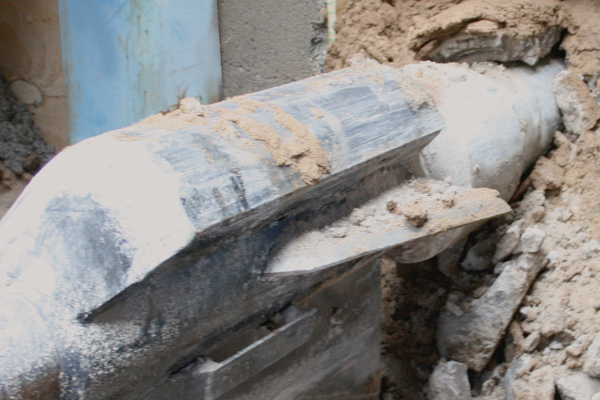The static pipe bursting method is a globally established trenchless technique used for the renewal of aging or damaged pipelines. It is especially effective when the structural integrity of the existing pipe is compromised—due to offsets, cracks, missing inverts, or partial collapse—and traditional repair or renovation methods are no longer viable.
This method not only restores function but also allows for upgrading hydraulic capacity by replacing the old pipe with a new one of equal or larger diameter. The result is a fully renewed pipeline with a projected service life of 80 to 100 years, ensuring both durability and improved performance.

Unlike dynamic pipe bursting, the static method relies on controlled, rod-driven force rather than percussive impact. The process unfolds in the following stages:
Rod Insertion: A bursting rod is first hydraulically pushed through the existing pipeline from an entry pit to a target shaft or exit pit.
Tool Coupling: Once the rod string reaches the exit point, a bursting head—pre-coupled with the new pipe—is attached to the rod.
Pipe Replacement: The rod is then pulled back through the old pipe. The bursting head breaks apart the existing pipe—cutting tough materials such as steel, ductile iron, or PE, and fracturing brittle materials like grey cast iron, vitrified clay, concrete, or asbestos cement.
New Pipe Installation: As the old pipe is fragmented and displaced radially into the surrounding soil, the new pipe is simultaneously drawn into place. This creates a new, centered pipe channel with minimal surface disruption.
FCH Construction brings extensive experience in static pipe bursting, delivering precision-led pipe replacement projects that meet today’s infrastructure demands while preparing for tomorrow’s capacity needs.
The static bursting method supports the installation of various pipe materials, including: